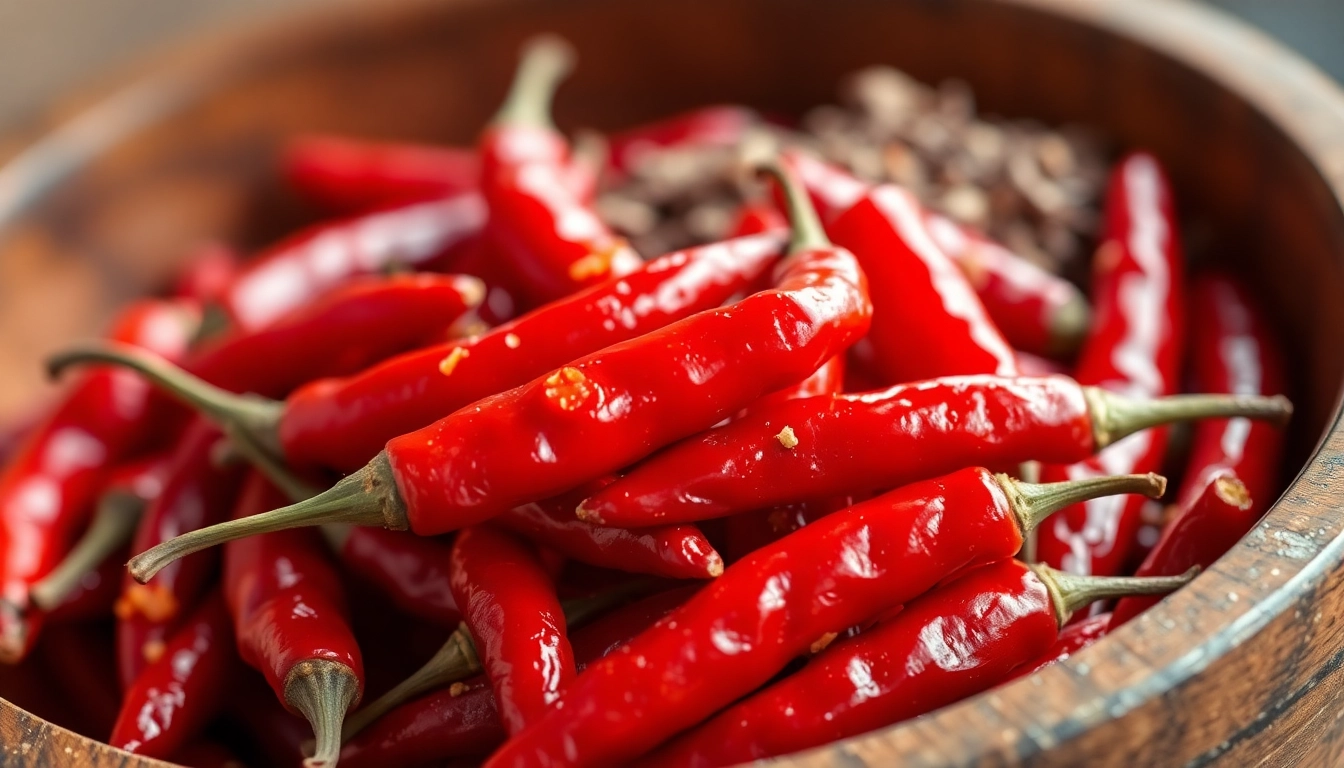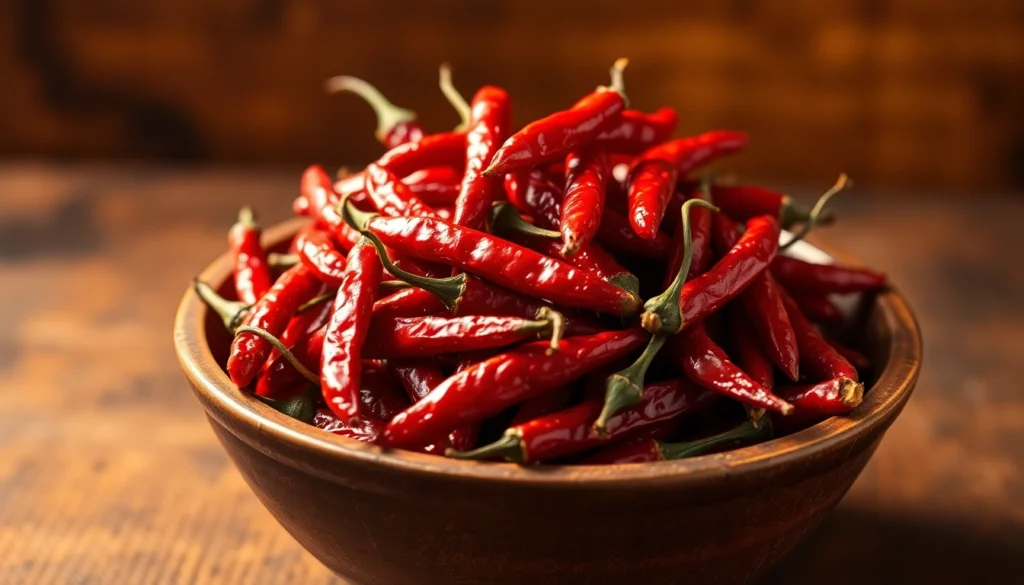Comprehensive Guide to Chilli Whole: Elevating Your Culinary Creations with Quality Spices
Chilli Whole, especially the popular Chilli Whole, is an essential ingredient in cuisines worldwide, renowned for its ability to add both flavor and heat to a variety of dishes. As a leading manufacturer and exporter of authentic spices, Spice Nest prides itself on offering premium Chilli Whole varieties that meet international quality standards. Understanding the nuances of Chilli Whole—from its types and quality indicators to its health benefits and culinary uses—is vital for chefs, food manufacturers, and home cooks aiming to deliver authentic and flavorful cuisine.
Understanding Chilli Whole: Types and Quality Factors
Common varieties of Chilli Whole used in cooking
Chilli Whole comes in a diverse array of varieties, each with unique flavor profiles, heat levels, and culinary applications. Some of the most popular types include Cayenne, Sangria, Kashmiri, Bird’s Eye, and Kashmiri Chilli. Each serves specific purposes: for instance, Cayenne is known for its fiery heat and is often used in hot sauces; Kashmiri Chilli imparts a vibrant red color with moderate heat, ideal for curries and stews; and Bird’s Eye Chilli offers intense spiciness, prominent in Southeast Asian cuisines. The selection of the right variety depends on the desired flavor intensity, color, and regional cuisine requirements.
Indicators of high-quality Chilli Whole spices
High-quality Chilli Whole should exhibit several key characteristics. Freshness is paramount—look for firm, plump, and vibrant red pods with shiny surfaces, indicating optimal moisture content. The aroma should be pungent, spicy, and fresh, not musty or faded, which can signify aging or improper storage. The seeds should be intact, and the pods should be free from mold, insect damage, or discoloration. Certified quality Chilli Whole from reputable manufacturers like Spice Nest undergo rigorous testing for pesticide residues and contaminants, ensuring safety and purity.
Differences between Chilli Whole and ground chili powders
While Chilli Whole retains the natural oils and flavors of the peppers, ground chili powders are made by grinding these pods into finer particles. Whole Chilli provides flexibility in culinary applications, allowing chefs to toast or grind to the desired coarseness for flavor extraction. Ground powders offer convenience and consistent spice levels but may lose volatile oils over time, reducing flavor intensity. Proper storage of ground chili in airtight containers prolongs shelf life, but the freshness of whole Chilli ensures superior flavor and aroma retention. Choosing between whole or ground depends on culinary needs—whole Chilli is preferred for slow-cooked dishes, pickling, or tempering, whereas powder is ideal for seasoning blends and quick recipes.
Health Benefits and Nutritional Value of Chilli Whole
Rich source of capsaicin and antioxidants
Chilli Whole is notably rich in capsaicin, the bioactive compound responsible for its characteristic heat. Capsaicin has been extensively studied for its antioxidant properties, which help combat oxidative stress and reduce inflammation. Additionally, the presence of vitamins A, C, and E enhances immunity, promotes healthy skin, and supports overall wellness. Regular consumption of Chilli Whole can contribute to improved metabolic health and anti-inflammatory benefits.
Benefits for metabolism and immunity
The thermogenic effect of capsaicin can boost metabolic rate, aiding in weight management and fat burning. It also stimulates the production of endorphins, providing pain relief and mood enhancement. Chilli Whole’s antioxidant content helps strengthen the immune system by neutralizing free radicals, while its anti-inflammatory properties support joint health and reduce chronic inflammation. Incorporating moderate amounts of Chilli Whole into your diet can elevate overall vitality and resilience against illnesses.
Possible health precautions and usage tips
Despite its benefits, excessive consumption of spicy Chilli Whole can cause digestive discomfort, such as heartburn or irritation. People with gastrointestinal issues, ulcers, or sensitivities should consume chili in moderation. To maximize health benefits, it’s advisable to use fresh, high-quality Chilli Whole and avoid charred or moldy pods. When handling, use gloves if necessary and wash hands thoroughly afterward. Cooking Chilli Whole releases capsaicin slowly, allowing controlled heat and flavor extraction, making it safer and more palatable.
Incorporating Chilli Whole into Your Recipes
Best culinary practices for using Chilli Whole
For optimal flavor, toast Chilli Whole in dry pan to enhance aroma and then grind or break into smaller pieces. Use in tempering, curries, pickles, or marinades to impart heat and color. When included in dry rubs or spice blends, ensure uniform grinding for consistent spiciness. For soups and stews, add Chilli Whole early in the cooking process to infuse deep flavors, adjusting quantities based on heat preference. Removing whole Chilli before serving is recommended for sensitive palates.
Popular regional dishes featuring Chilli Whole
Chilli Whole plays a vital role across diverse cuisines. In Indian dishes like Rogan Josh, Vindaloo, and Maharashtrian Kolhapuri, dried red Chilli adds depth and spice. In Mexican cuisine, whole dried Chilli—such as Ancho or Guajillo—are essential for sauces like Mole. Southeast Asian recipes often utilize Bird’s Eye Chillis in sambals and salads. In Middle Eastern dishes, Chilli Whole enhances kebabs and rice pilafs. Recognizing regional preferences allows chefs to select the appropriate Chilli Whole for authentic flavors.
Tips for storing and enhancing flavor retention
Store Chilli Whole in airtight, opaque containers in a cool, dry place away from direct sunlight. Proper storage prevents moisture absorption and flavor loss. For long-term storage, vacuum sealing is recommended. To deepen flavors, lightly toast Chilli Whole before use, releasing essential oils and aroma. Replacing stored Chilli every six months ensures freshness and consistent flavor quality.
Markets and Sourcing of Authentic Chilli Whole
Leading global suppliers and quality assurance
Major suppliers like Spice Nest maintain stringent quality control measures, including certifications, pesticide testing, and adherence to international standards. Sourcing Chilli Whole directly from reputed farms ensures consistency, purity, and organic certification where applicable. Transparency in supply chains, traceability, and fair-trade practices are crucial aspects for discerning buyers seeking authentic Chilli Whole products.
Trends in organic and premium Chilli Whole production
The organic food sector is witnessing substantial growth, driven by health-conscious consumers. Certified organic Chilli Whole, cultivated without synthetic fertilizers or pesticides, fetches premium prices and appeals to global markets emphasizing sustainability. Innovations in cultivation techniques, sustainable farming practices, and eco-friendly packaging are shaping the future of Chilli Whole production, aligning with consumer demands for purity and environmental responsibility.
How to select reliable exporters and manufacturers
Select manufacturers with verifiable certifications such as ISO, HACCP, and organic accreditation. Reputable exporters provide detailed product specifications, testing reports, and samples. Due diligence includes evaluating customer reviews, trade references, and sampling the product to verify aroma, color, and flavor. Establishing long-term relationships with trusted suppliers like Spice Nest ensures consistent quality, timely delivery, and adherence to safety standards.
Future Trends and Innovations in Chilli Whole
Emerging trends in spicy cuisine markets
The global culinary landscape increasingly favors bold flavors, unique spice blends, and health-oriented ingredients. Spices like Chilli Whole are evolving with consumer preferences for organic, heirloom, and artisanal varieties. Fusion cuisines leveraging Chilli Whole—such as spicy sushi, chili-infused beverages, or gourmet snacks—are gaining popularity. Additionally, plant-based and clean-label trends push for natural, preservative-free Chilli Whole offerings.
Innovative packaging and preservation techniques
Advanced packaging solutions, such as vacuum-sealed pouches, nitrogen flushing, and eco-friendly biodegradable containers, extend shelf life and maintain freshness. Smart packaging with QR codes enables traceability and consumer transparency. Innovations like freeze-drying and controlled atmosphere storage preserve aroma and flavor longer, ensuring premium quality for international markets.
Consumers’ evolving preferences and sustainability efforts
Consumers are increasingly seeking sustainable and ethically sourced Chilli Whole. Certifications like organic, fair trade, and eco-labels are influential purchasing factors. Brands investing in sustainable farming, renewable energy, and reducing carbon footprint are gaining trust and market share. Transparency in sourcing and production processes fosters consumer loyalty and aligns with global sustainability goals.

